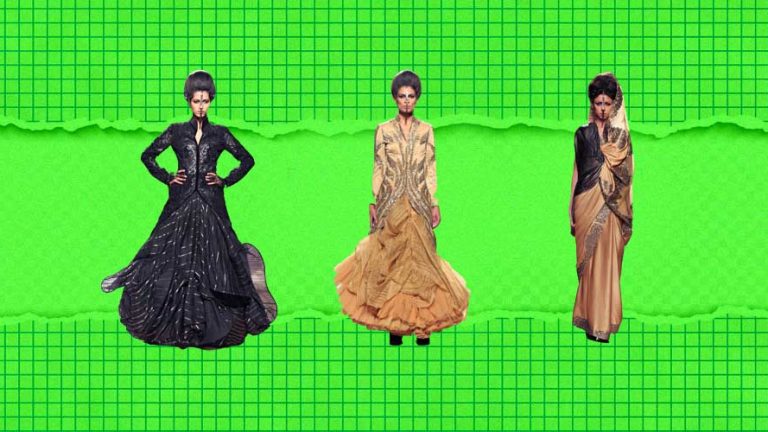Couture: this age-old fashion trend is back in India
Couture symbolizes the refined spirit of society, whereas fashion is a sensation. Charles Frederick Worth, a Paris-based Englishman in the 19th century, was the first to establish the notion of custom design to suit the wearer’s taste and personality. Each of his unique costumes was presented on live models, ushering in the period of haute couture and converting the notion of clothing into fashion. Since then, the French have claimed ownership of this art form, but India, with its ancient legacy of craft and industry, was not to be left behind.
The concept that fashion clothing women whereas couture dress the spirit of the period runs through everything. Consider Amit Aggarwal’s sculptural constructions that woven metallic strips with soft materials like velvet and satin-faced georgette in 2013, bringing an industrial approach to Indian draperies and appealing to the new generation of tech-first millennials. Thierry Mugler’s model in a steel blue, translucent cyborg suit for his Autumn/Winter 1995 couture, which Vogue hailed as the dawn of the Internet age.
Couture is dramatic, frequently extravagant, and can be just as showy as fashion, which is never more apparent than in a post-pandemic setting. The tangible representation of material perfection, couture is the expression of an ideal, and it is the canvas on which creators stamp their signature on the collective catwalk. The stage is made up of several concentric circles, with the four striking, virtually similar women entering the innermost circle. They are all carrying what appears to be a bunch of red roses. Before slithering out in opposite directions, they create another circle while standing shoulder to shoulder. The India Couture Week is back after three years of battling pandemic devastation in the fashion industry.
Lavishness ruled dominant, money poured freely, and purism was firmly in control during the just-held FDCI India Couture Week 2022. The extravagant, ornately decorated ensembles on exhibit made this clear.
The lehenga is the perfect example of how Indian event attire for women should be represented by only one clothing item. Every designer and fashionista has been captivated by this ankle-length skirt used on formal or ceremonial occasions over the years. Although most designers during India Couture Week stuck to tried-and-true lavishly embroidered versions, a few did not hesitate to vary with scale and proportions for dramatic effect.
The addition of layers to otherwise minimalist clothing gives it more adaptability while also sheltering the wearer from the weather. At ICW 2022, jackets caught the eye. They came in a variety of styles, from short ones with peplum awnings to long, structural ones with manly designs, from airy capes to adorable boleros. For an intriguing look, many designers, like Rahul Mishra, coupled them with sarees.
Playing with the form and pattern of an ensemble’s sleeves is a simple method to alter its appearance. Although wearing sleeves in the summertime is encouraged, India Couture Week’s presentation is for colder climates, and sleeves are crucial as both weather protection and containers for propriety.
The fact that couture need not be limited to conventional Indian knowledge is one point on which all Indian designers agree. The younger and more tech-savvy the customer, the greater influence worldwide trends are having on their purchasing decisions. To do this, a lot of designers looked to foreign cultures and trends for inspiration.





Add comment